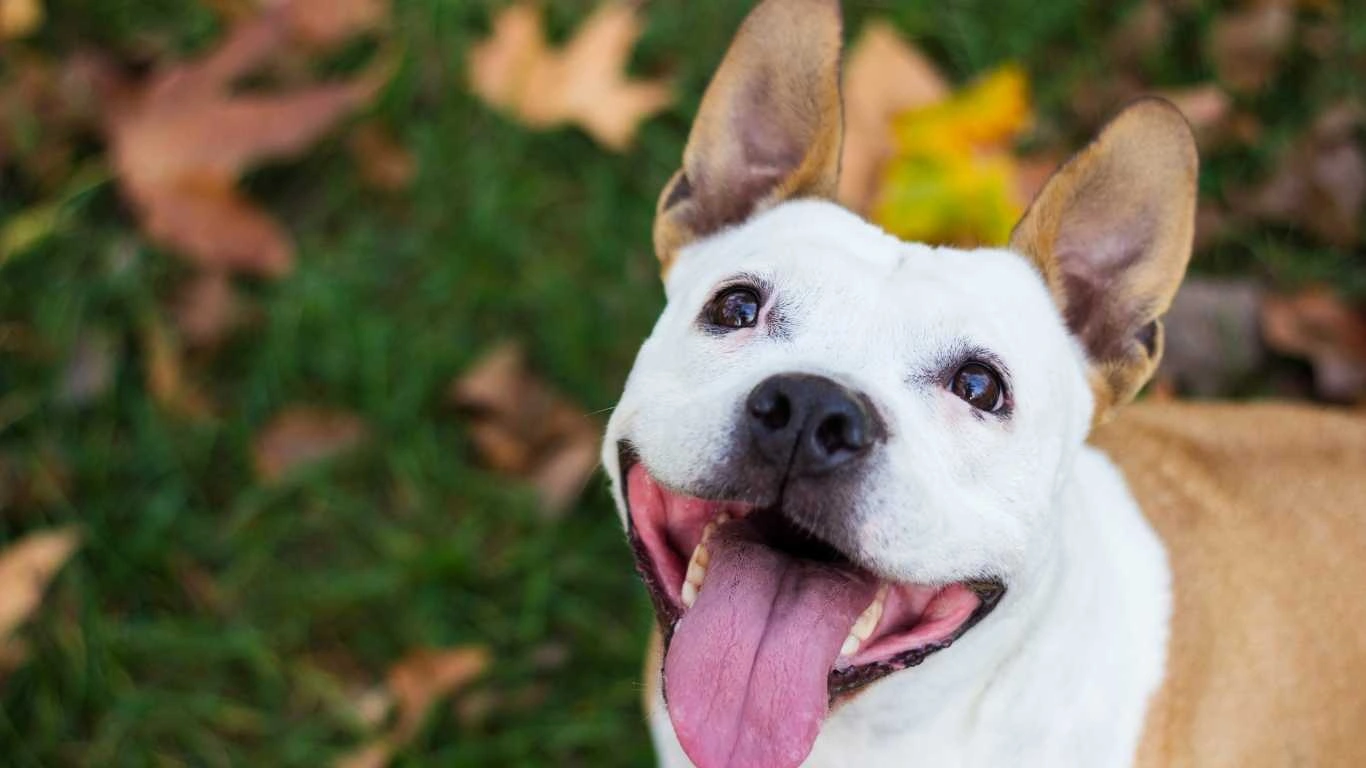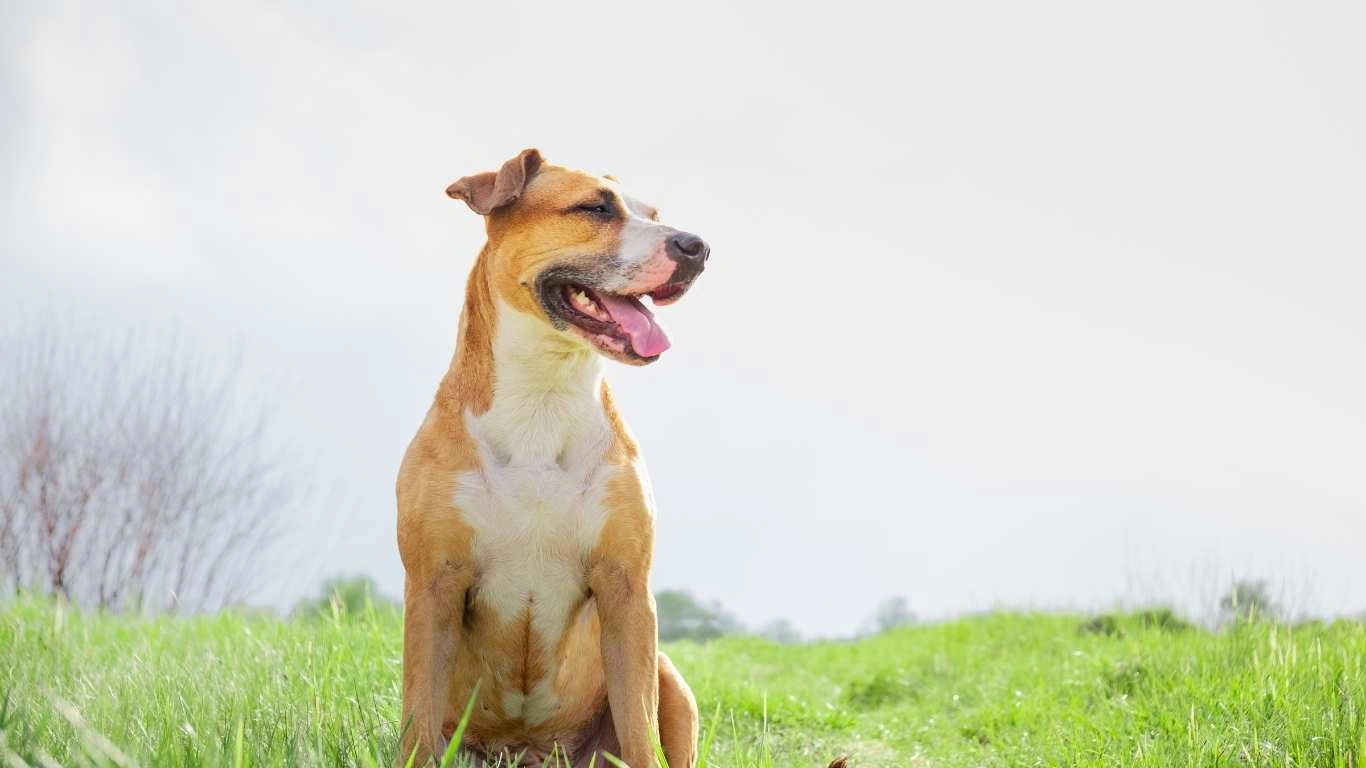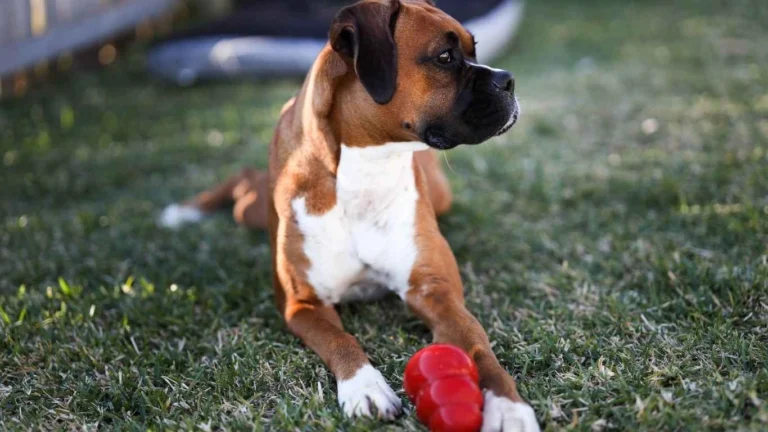Best Diet for Dogs with Chronic Fatigue: Energize Your Pup’s Life
As someone who’s spent years hands-on in clinics and shelters caring for pups of all shapes and stories, I’ve seen how much a dog’s diet can impact their health — especially when they’re struggling with energy levels. If you’re here, chances are you’re concerned about your furry friend and trying to figure out the best diet for dogs with chronic fatigue. I’ve been there too, with tired tails and droopy eyes walking through our shelter doors, and I’ve learned that what we put in their bowls can truly change their lives.
Understanding Chronic Fatigue in Dogs

First off, let’s get on the same page about what chronic fatigue actually looks like in dogs. This isn’t just your average “I’m not in the mood for fetch today” kind of tired. We’re talking about a pup that’s consistently low-energy, disinterested in play, and may even seem depressed. In my experience, it’s heartbreaking to see — especially in a normally spunky dog. Chronic fatigue can be triggered by a range of underlying issues, from autoimmune conditions and thyroid imbalances to poor nutrition and long-term stress.
While your vet should absolutely be your first stop to rule out (or treat) medical causes, diet is one piece of the puzzle that’s often overlooked or underemphasized. And in the shelter world, where we see everything from severely malnourished strays to dogs dumped with bags of low-quality kibble, I’ve seen firsthand how much of a turnaround the right food can spark.
What to Look for in the Best Diet for Dogs with Chronic Fatigue

1. High-Quality Protein is a Must
When dogs are chronically fatigued, one of the first things I check in their diet is the protein source. Are they getting enough? And is it coming from real meat or mystery-meal byproducts? Protein is essential not just for muscle repair but for energy production and immune health. I always recommend looking for diets that list named meats like chicken, turkey, salmon, or beef right at the top of the ingredient list.
- Chicken – Lean and easy to digest, perfect for dogs with sensitive stomachs.
- Salmon – Loaded with omega-3s, which help reduce inflammation.
- Beef – Great for building strength and stamina, especially in active breeds.
Back at the shelter, we had this older retriever named Duke who barely had the energy to walk across the kennel. Swapping his bargain-bin kibble for a high-protein, salmon-based diet made a noticeable difference in just two weeks. His coat got shinier, and his tail? It started wagging again. That’s when it clicked — food really can be medicine.
2. Healthy Fats for Sustainable Energy
Another key component in helping dogs with fatigue is incorporating the right kinds of fats. Think omega-3 and omega-6 fatty acids, which not only fuel the body but also support brain and joint health. This is especially important for senior dogs or breeds prone to arthritis and inflammation.
Here are a few fat-rich ingredients I love to see in dog foods for energy support:
- Fish oil – For mental clarity and anti-inflammatory benefits.
- Flaxseed – A plant-based source of omega-3s.
- Chicken fat – A surprisingly digestible fat source with loads of flavor (dogs love it!).
If you’re into homemade diets or supplements, a drizzle of wild salmon oil can go a long way. I’ve even had a few picky eaters at the shelter who turned their noses up until we added a touch of chicken fat or sardine to their meals.
3. Low-Glycemic Carbohydrates
Here’s something I wish more pet parents knew — not all carbs are created equal. Dogs with chronic fatigue don’t need sugar crashes or empty calories. Instead, they need complex carbs that release energy slowly and steadily. I often suggest switching from white rice or corn-based fillers to things like:
- Sweet potatoes – Packed with fiber and vitamins.
- Quinoa – A rare, high-protein grain that’s gluten-free.
- Oats – Gentle on digestion and great for sustained energy.
We once fostered a Border Collie mix named Tessa who came to us severely underweight and constantly exhausted. After transitioning her to a diet rich in sweet potatoes, brown rice, and turkey, she had enough energy to start agility training — no joke. The transformation was wild.
Micronutrients That Make a Big Difference

It’s not just about the macros. When I evaluate a dog’s diet, especially one battling chronic fatigue, I always zoom in on their micronutrient intake. Things like B-vitamins, iron, magnesium, and zinc play a massive role in energy metabolism. If they’re running low, their whole system can slow down.
Watch for These Powerhouse Nutrients:
- Vitamin B12 – Supports nervous system health and energy conversion.
- Iron – Crucial for red blood cell function and oxygen transport.
- Magnesium – Aids in enzyme function and muscle performance.
- Zinc – Keeps immune defenses strong and assists with metabolism.
Sometimes, even the best commercial foods fall short, which is why I’m a big fan of high-quality multivitamin supplements or vet-recommended add-ins. One of my go-to brands is formulated specifically for working and senior dogs, and I’ve seen them perk right up after just a couple weeks on it.
In the next section, we’ll dive into some specific food brands and recipes I’ve used and recommended over the years — from budget-friendly options to gourmet-grade meals for those pups who need a little extra TLC.
Top Recommended Foods for Dogs with Chronic Fatigue

Alright, now that we’ve got a solid understanding of what makes up the best diet for dogs with chronic fatigue, let’s dig into the nitty-gritty — the actual food choices. Whether you’re going with kibble, canned, raw, or home-cooked, quality matters. I’ve tested plenty of options over the years, both in the clinic and personally with foster dogs who came in looking like they hadn’t had a decent meal in weeks.
Commercial Dog Foods That Actually Work
Let me just say — not all commercial dog foods are created equal. Just because the packaging has a smiling golden retriever and a shiny coat doesn’t mean it’s giving your pup what they need. Here’s a handful I’ve recommended time and again, especially for dogs who are low-energy or recovering from illness.
- Orijen Original – Packed with high-quality animal protein and low-glycemic veggies like lentils and peas. I’ve seen sluggish dogs perk up after just a few weeks on this stuff.
- Wellness CORE RawRev – This one’s grain-free and features freeze-dried raw pieces for an added nutritional punch. Bonus: most dogs go nuts for it.
- Farmina N&D Ancestral Grain – Ideal for sensitive dogs who still need energy support. The use of ancient grains like spelt and oats helps prevent blood sugar spikes.
I remember one case — a border terrier named Max, who’d been rescued from a neglect situation. He barely moved during intake, and his coat was dull and patchy. We transitioned him to Farmina over the course of two weeks, and I swear, it was like watching a flower bloom. His eyes brightened, his energy came back, and he even started initiating play with other dogs again. Diet matters. Big time.
Homemade Recipes That Boost Energy
Now, I know some of you are the DIY type — and honestly, I love that. Making your dog’s food from scratch can be rewarding, but it takes a bit of research to do it right. The goal? Provide a complete and balanced meal that supports recovery and energy production. Here’s one of my go-to recipes:
- Protein: 1 lb ground turkey (or lean beef)
- Carbs: 1 cup cooked quinoa or brown rice
- Veggies: 1/2 cup chopped spinach, 1/4 cup grated carrots
- Fats: 1 tbsp salmon oil or olive oil
- Extras: Dash of turmeric and a canine multivitamin (vet-approved, of course)
Just cook everything gently — don’t overdo it — and mix it well. You can batch-cook and freeze in portions, which is what I used to do when caring for a trio of rescued senior pugs. One of them, Daisy, had such bad chronic fatigue she would barely leave her crate. Within a month on this diet, she started waddling to the door with her tail wagging every time she heard the treat jar shake. It was the sweetest thing.
Hydration and Supplement Support

We talk a lot about food, but hydration is just as critical when it comes to managing fatigue in dogs. Dehydrated dogs are tired dogs. Period. I always make sure my clients check their dog’s water intake, especially if they’re eating dry food. You’d be surprised how many low-energy dogs turn out to be underhydrated.
Smart Hydration Tips:
- Add water or bone broth to kibble – Not only does it increase hydration, but it makes meals more enticing.
- Offer fresh water multiple times a day – Especially for older dogs who may forget to drink.
- Try electrolyte-enhanced pet drinks – These can help with recovery, especially post-exercise or illness.
As for supplements, I’ve leaned on them heavily — especially in clinic recovery plans. Chronic fatigue often comes with a micronutrient gap, and while food does a lot, supplements can bridge the gap quickly.
Top Supplements for Energy and Vitality:
- CoQ10 – Supports heart and cellular energy production. Great for older dogs.
- L-carnitine – Helps convert fat to energy. I recommend this often for overweight or lethargic dogs.
- Probiotics – A healthy gut equals better nutrient absorption and stronger immunity.
- B-Complex Vitamins – These are crucial for energy metabolism. I’ve had dogs bounce back faster with these added in.
I had a lab mix named Tank — big guy, super sweet, but just completely out of steam no matter what we tried. After adding L-carnitine and a high-potency probiotic to his fish-based diet, we noticed a huge change. He wasn’t zooming around the yard or anything, but he was alert, curious, and finally seemed like himself again.
Feeding Schedule and Meal Frequency

One of the more overlooked things I see — especially in busy households — is how much the feeding schedule affects a dog’s energy. For dogs with chronic fatigue, eating one huge meal a day just doesn’t cut it. Their metabolism is already struggling; they need more consistent fuel to stay stable throughout the day.
Try This Feeding Routine:
- Morning Meal (7–9 AM): Balanced mix of protein, complex carbs, and fat. Think turkey and oats with a splash of broth.
- Afternoon Boost (1–3 PM): Small meal or snack — maybe some cooked sweet potatoes and boiled chicken.
- Evening Meal (6–8 PM): Same size as breakfast, maybe with a veggie twist like green beans or squash.
In between, keep treats minimal and healthy. A spoonful of plain pumpkin or a frozen bone broth cube can work wonders without packing on the calories. At the shelter, we used to freeze kibble mixed with water and hide it in puzzle feeders to help boost both hydration and engagement — especially for our low-energy seniors who needed a little mental lift, too.
So much of managing fatigue is about routine and consistency. Once your dog knows when food is coming and that it makes them feel good, you’ll start to see the spark come back. And that — let me tell you — is one of the most rewarding transformations you’ll ever witness.
Behavioral and Lifestyle Tweaks That Support Energy

Okay, so we’ve talked food, supplements, and feeding schedules — but diet is just one piece of the puzzle when you’re trying to help a tired pup bounce back. Over the years, I’ve learned that lifestyle plays a major role in supporting dogs with chronic fatigue. I’ve seen some dogs completely transform when small daily routines were shifted to better support rest, mental engagement, and movement.
When I worked with a long-term rescue case named Willow — a sweet shepherd mix who had spent months in a high-stress shelter environment — food helped her a lot, sure, but what really moved the needle was adjusting her daily routine. Here’s what worked:
1. Gentle, Consistent Exercise
Overexercising a fatigued dog can actually backfire, but the right amount of low-intensity activity can help increase stamina gradually. I’m talking short sniff walks, slow-paced games, or light indoor play.
- Start with 5-10 minute walks twice a day and adjust based on energy level.
- Let them sniff — it stimulates their brain and provides gentle enrichment.
- Incorporate mental puzzles like treat mats or frozen Kongs.
With Willow, I noticed that once she had a predictable, peaceful walking schedule and a comfy bed near a sunny window, her mood lifted almost as much as her energy.
2. Stress Reduction & Emotional Wellness
Chronic stress and fatigue go hand in hand. This is especially true in rescued dogs or those with anxious personalities. Dogs who are emotionally exhausted need just as much care as those who are physically tired.
What helps most?
- Consistent daily routines (they thrive on predictability).
- Safe, quiet spaces to rest — think calming music, dim lighting, and comfy bedding.
- Gentle touch — massage, brushing, or just sitting together calmly can build trust and reduce anxiety.
One of our oldest rescues, a grey-faced boxer named Hank, would literally sigh when you tucked him in with a soft blanket and turned on some classical music. True story. He taught me that a calm environment heals more than just bodies — it soothes spirits.
Red Flags to Watch for in Fatigued Dogs

While nutrition and lifestyle can work wonders, I’d be doing you a disservice if I didn’t also talk about the warning signs. Sometimes fatigue is a symptom, not the root issue — and you’ll want to rule out or treat any underlying medical conditions that could be contributing to your dog’s low energy.
Call Your Vet If You Notice:
- Sudden behavior changes – If your dog was energetic and suddenly slows down with no clear cause.
- Persistent digestive issues – Chronic diarrhea, vomiting, or weight loss.
- Limping or pain sensitivity – Especially when paired with reluctance to move or jump.
- Disinterest in food or water – A tired dog who also refuses to eat is waving a red flag.
In my clinic days, I saw far too many pet parents brush off tiredness as just “getting older” or “lazy,” when in reality, there was a thyroid imbalance, anemia, or tick-borne illness underneath. Always trust your gut — and your vet.
Feeding Tips for Picky or Low-Appetite Dogs
One challenge that comes up a lot with dogs experiencing chronic fatigue? A total disinterest in food. It’s tough, especially when you know food is key to their recovery. Here’s a few tricks I’ve used that actually work — not just theoretically, but with real dogs who gave me the stink-eye when I tried to offer them even the fanciest dog food.
Appetite-Boosting Tricks:
- Warm the food slightly – Enhances aroma and appeal, especially for older dogs with dulled senses.
- Add toppers – Bone broth, sardines, cooked eggs, or even baby food (no onion/garlic!) can entice picky eaters.
- Hand-feed at first – Especially for rescues, this builds trust and encourages engagement.
- Small, frequent meals – Sometimes it’s just overwhelming to face a full bowl.
There was a little Shih Tzu named Peanut in our clinic once — he had zero appetite for days. We tried everything, and what finally worked? A spoonful of warm plain chicken and rice with a sprinkle of freeze-dried liver bits. Simple, but magic.
Final Thoughts: Building Long-Term Energy from the Inside Out
Helping a dog recover from chronic fatigue isn’t just about feeding them a premium kibble or tossing them a supplement. It’s about building a routine that supports every aspect of their well-being — from the bowl to the bed, from their gut to their mindset. And honestly, seeing a dog go from low-energy and disconnected to vibrant and tail-wagging is one of the best feelings in the world.
The best diet for dogs with chronic fatigue isn’t one-size-fits-all — it’s one that meets your dog where they are and supports where they’re going. Combine whole, nutrient-rich food with vet-approved supplements, a bit of TLC, and a structured routine, and you’ll start seeing signs of recovery sooner than you might think.
Don’t forget: if your dog’s fatigue seems severe or doesn’t improve with these changes, get that vet appointment booked. It’s always better to play it safe.
References
Disclaimer
This article is intended for educational purposes and is based on my professional and personal experience working with animals in veterinary and shelter settings. It does not substitute for veterinary advice. Always consult your veterinarian before making significant changes to your dog’s diet or health routine.





